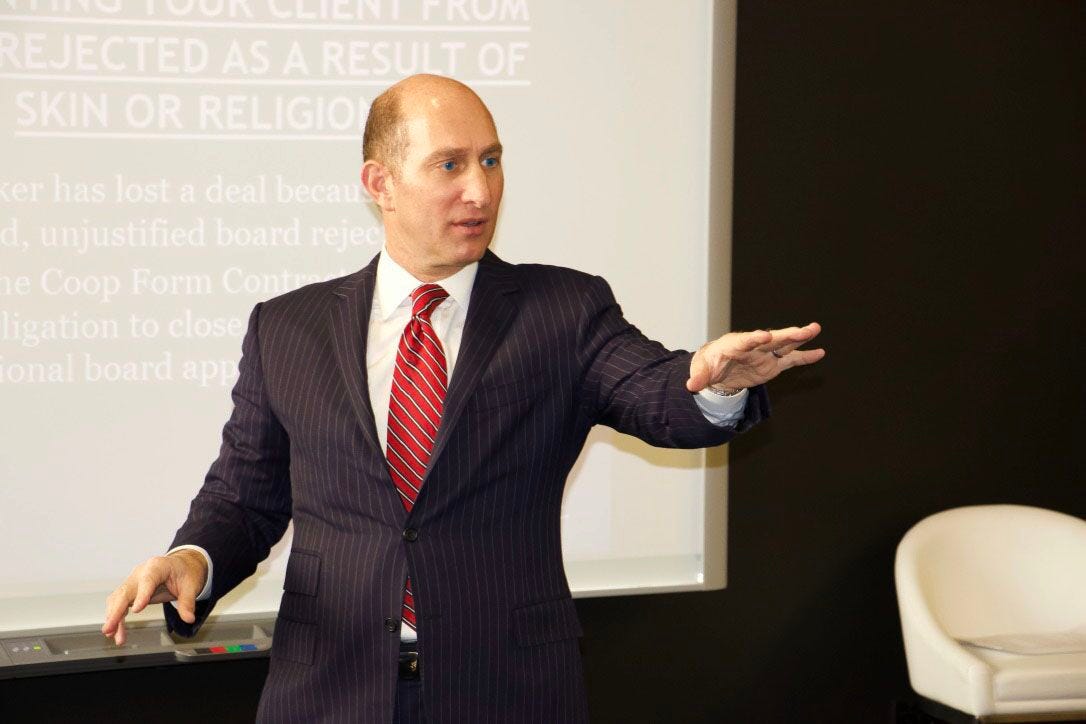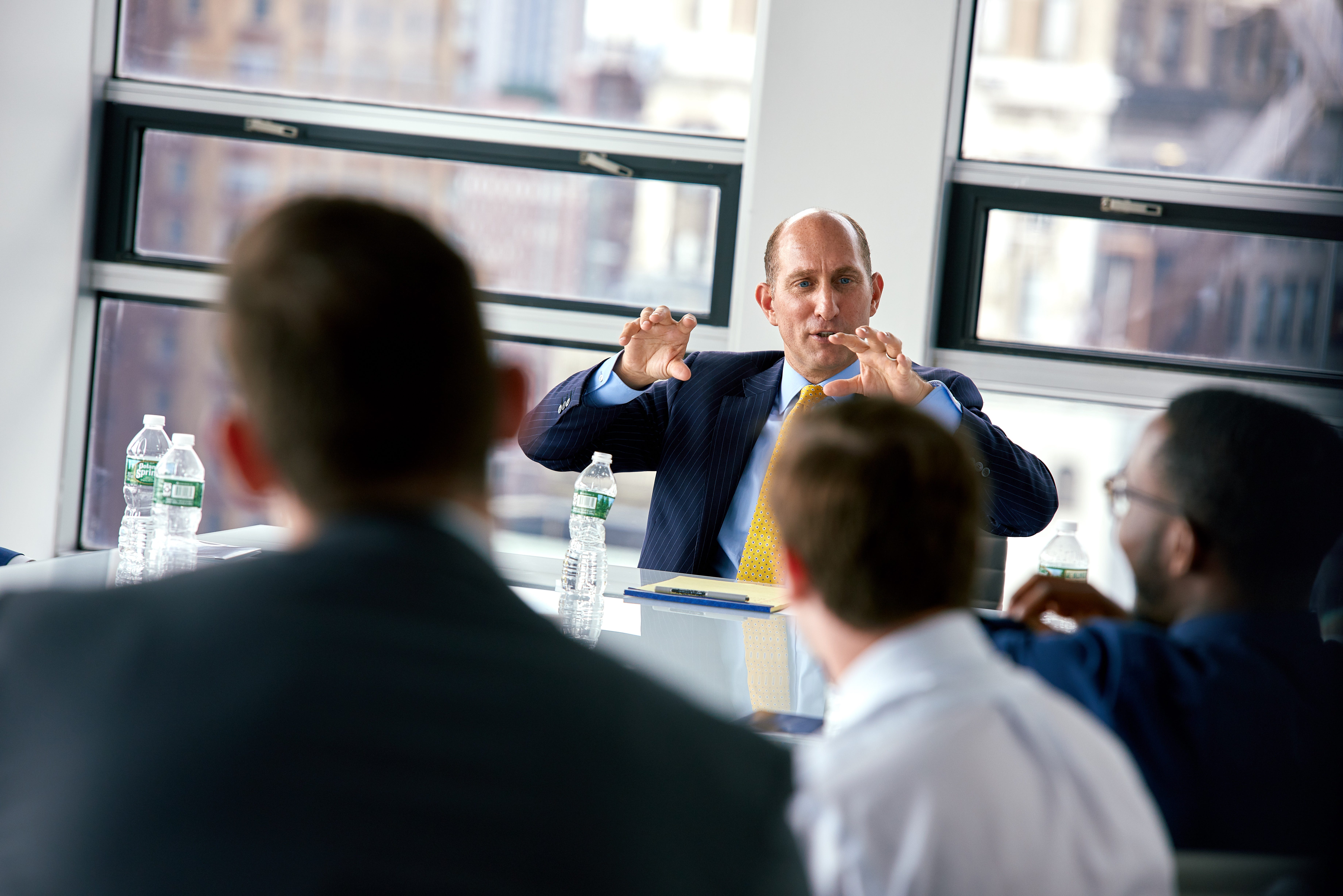By Analina Smeraldi
July 7, 2020

I first became intrigued with Adam Leitman Bailey while reading the 250th issue of The Real Deal. In it, the publisher and editor discussed a series of cases where Bailey used an “ingenious” legal weapon that caused Congress to intervene and change the law. They further noted that The Real Deal’s largest advertisers asked the publication not to cover Adam Leitman Bailey and his law firm so his legal theories would not be exposed.
A search of The Real Deal’s articles supports that point. Although many of Bailey’s cases have been covered, The Real Deal has never published a flattering feature on Adam Leitman Bailey or his firm (Adam Leitman Bailey, P.C.) despite covering many of the other leading lawyers of his generation with glowing profiles.
The more I dug, the more intriguing the story became.
In 2011, Adam Leitman Bailey was asked to participate in a major industry debate hosted by The Real Deal at Lincoln Center. Every debater that night was featured prominently in profiles in The Real Deal — except for Mr. Bailey.

A search through other New York periodicals reveals the same story. All of the major heavyweights — including The New York Times, The New York Post, The Daily News — had covered Adam Leitman Bailey’s cases and victories as front page news but never profiled or interviewed the firm. Even more mysterious was the fact that various other real estate attorneys in many of these cases had been profiled, some several times during the 20-year life of Bailey’s firm.
As I combed through the records and court documents during the 20 years the firm had been in existence, I found that in almost every facet of real estate law, Adam Leitman Bailey, P.C. has not only directly inspired new laws, but also changed the very way New York practices real estate law.
And yet, this point had never been celebrated. For the legal profession, this was unheard of.
Now I was more than intrigued. I was determined to find out Adam Leitman Bailey’s secrets to quietly becoming one of the most successful attorneys of our generation and why he had fallen under the radar — or had been shunned.
The Inner Workings of Adam Leitman Bailey, P.C.
Over the last 20 years, Bailey has built the largest real estate law firm owned by one person and its 20-plus attorneys have grown organically — two thirds of the firm have been with it since law school or for over a decade.
Attorneys chosen from law school are hand-picked by a “Hunger Games” type competition where externs compete for the coveted summer associate selections and the best summer associates receive offers to join the firm.

The firm has openly shunned hiring “rich” people and desired to hire lawyers that were “hungry,” “smart,” and who were “street lawyers.” Although the firm does maintain hires from graduates of ivy-league law schools, it is far better known for recruiting from the top of the classes at local New York and New Jersey-based law schools.
Unlike most law firms, there is no requirement to bring in business. No attorney at the firm could remember an attorney ever being fired and certainly no employee or attorney had ever been fired due to an economic downturn or budget cuts. Meanwhile, attorneys are generally paid more than other law firms depending on how many hours they work, as they receive one third of the pay from the hours billed that is collected.
At the time of this writing, nearly 50 percent of the firm were females and the firm spoke several languages and represented many races, ethnicities and countries. All over their website, the firm claims to want the best lawyers, regardless of background, who will do anything to win and close the deal for their clients.
Discipline Beyond Mere Mortals
When it came to building the best real estate law firm, Adam Leitman Bailey focused on that, and only that. He put everything else to the side.
Bailey did not have his first child until he was 44 years old; he has no vices or extravaganzas, and maintains a humble lifestyle comparable to that of a professional athlete. He exercises 7 days a week and keeps a perfect diet — and expects his attorneys to follow his example.
He loads the office with healthy food, pays for employee gym memberships and covers expenses to allow employees to work from home while raising children. During vacations he reads books on great leaders overcoming great strife to learn from their mistakes and apply it to the law.
In many ways, Adam Leitman Bailey looks at the law as conducting or preventing a war. He rises at 6am with a 4-mile run in Central Park and arrives home usually between 9–10 pm. He does not network and disdains “events” despite being social. He does not use curse words as he worries that he will slip in front of a judge.
The Art of Lawyering
Bailey’s high school teachers say he has been self-motivated since he was a child. His law school professors kept in touch with him as soon as he left law school expecting great things. The attorneys at Adam Leitman Bailey, P.C. give glowing remarks:
“He lives his life as if he always has something to prove to himself or someone else, which makes him reach for more every day.”
“In 19 years, I have never seen him give less than 100 percent.”
“His mind can think faster than yours or mine. He can also predict the future or steps into the future which allows him to think strategically.”
“He is a student of negotiating and takes the art very seriously and all of this together makes him a very dangerous attorney to have as an adversary.”
The Record
Adam Leitman Bailey’s intense, creative, investigative, must-win, lawyering would travel the earth to make sure his clients prevailed.

There was the case where Bailey proved that 75% of an entire building had been substantially rehabilitated without any checks or receipts — by using pictures. Or the Deutsche Bank case where Adam Leitman Bailey’s investigative lawyering team debunked a forged signature claim, forcing the Defendant’s son to recant his story and plead the fifth Amendment.
Then there was the miraculous win where Bailey defeated a claim of adverse possession by good faith purchasers, despite its client, a convicted felon, forgetting that he owned the property and abandoned it for 13 years.
In a battle that resulted in Adam Leitman Bailey having a pitchfork wielded at him by the adversary, Bailey prevailed at having a new statute applied for the first time to decide who owns a strip of land where applying the old or new statute would win or lose the case. In Hartman v. Goldman, the Hartmans had planted new foliage and claimed to have legally stolen the land as they had landscaped and moved the lawn and maintained a large piece of the property for more than 20 years.
Then there were the cases that inspired completely new laws. In the cooperative and condominium housing field, Adam Leitman Bailey won a decision where for the first time a judge forced a cooperative to conduct repairs despite a shareholder’s alleged responsibility. In another case, a New York Appellate Court represented by Adam Leitman Bailey found that the Sponsor — and not the condominium board — was obligated to cure construction defects.
As Bailey has done for most of its career, he and his firm made new law for the underdog as the Appellate Division granted standing to a non-shareholder suing a cooperative board for the first time for self-dealing and religious discrimination for illegally rejecting a Holocaust survivor.
Taking away a tenant’s right to a post-judgment ability to cure a nuisance, Adam Leitman Bailey made new law at the Appellate Division where the evidence was so overwhelming of the tenant’s nuisance conduct, post-judgment cure was deemed inappropriate because the tenant could not cure what the tenant cannot appreciate.
Further expanding the law and rent regulation rights, for the first time, the Appellate Division allowed a minor to live alone and retain the family’s rent-regulated apartment while her mother moved to California to care for her ailing parents.
In new construction cases, the firm set a new record monetarily per square foot in a settlement in the largest crane accident in New York City history. In United States Bankruptcy Court, Adam Leitman Bailey once again received a landmark decision that its client would allow the new sponsor to avoid fixing the defects left behind by the original builder — the first case of its kind.
In an otherwise ordinary case, Adam Leitman Bailey called the developer “cowboys” during oral argument for violating building protocols and damaging clients protocols, and the judge agreed, refusing to give the developer a license to access the defendant’s property.
In the battle of the famous pizzerias, Adam Leitman Bailey entered pizza lore when his client, Patsy’s of Harlem, forced Patsy’s under the Brooklyn Bridge to change its restaurant’s name to Grimaldi’s.
Very few things are more famous than the Beatles. Bailey’s client, a landlord, was unable to collect a significant sum of rent debt from a tenant. When it was discovered that the tenant was selling the suit John Lennon wore on the cover of the Beatles’ “Abbey Road” album, Bailey fought for his client to collect the proceeds of the sale to pay off the judgement owed to him.
Maybe another firm could post the above results during a 20-year record — it would be hard to accomplish, but possible. But it would be impossible for another law firm to be so successful and handle such interesting and bet-the-company cases and still stay out of the public eye for 20 years.
Is Adam Leitman Bailey hated? Ignored? Boring? Or is there another reason why the media has failed to feature one of the nation’s leading law firms?
The answer is not abundantly clear. The secrets to Bailey’s success are available to those who dig, but his relationship with the media remains shrouded in mystery.

 Twitter
Twitter